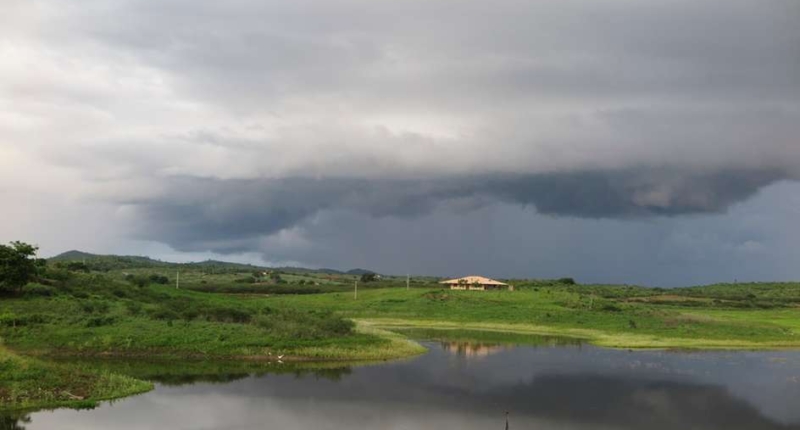Saint Joseph’s Day is celebrated on March 19th in Ceara, but there is no scientific evidence to support the belief that rain on this day signifies an upcoming period of good rains and prosperity. While some may pray to Saint Joseph or other saints for rain, the honest and upright life of Saint Joseph serves as an example for us all, and his intercession is still an important part of the Saint Joseph’s Day celebration.
This year’s forecast for March 19th is conducive to rain all over Ceara, with a 90% chance of rain in all regions of the state, according to the National Institute of Meteorology (Inmet) and the Center for Weather Forecasting and Climatological Studies (Cptec). Looking ahead, the climate forecast for March, April, and May 2023 indicates a 40% probability of precipitation above normal, 40% around normal, and 20% below normal, according to Funceme.
In the end, while science can provide us with weather forecasts and predictions, the people of Ceara will continue to pray to Saint Joseph and other saints for rain and prosperity, regardless of any scientific evidence supporting the connection between Saint Joseph’s Day and the rainy season.
The Relationship Between Saint Joseph’s Day and Rain in Ceara: What Science and Religion Say
The people of Ceara, and the Northeast in general, have long believed that rain on Saint Joseph’s Day signifies an upcoming period of good rains and prosperity. However, what do science and religion have to say about this belief?
To investigate this connection, Diario do Norste compared rainfall data for March 19th, Saint Joseph’s Day, with data for the entire rainy season over the past 20 years from Cearense Meteorology and Water Resources (Funceme) Precipitation Almanac.
According to Meiry Sakamoto, director of meteorology at Funceme, the data does not support this belief. “From a religious point of view, it’s just a coincidence,” she explains.
In fact, the data shows that there has been almost no correlation between Saint Joseph’s Day and the rainy season over the past two decades. While in nine years there was some connection, in the remaining eleven years, no causal relationship was found.
The study determined the “success” of Saint Joseph’s Day based on the number of municipalities with precipitation on that day. If it rained in less than half of Ceará’s 184 cities, the day was considered unsuccessful.
Meiry Sakamoto believes that the people of Ceara may have this belief due to their understanding of the Intertropical Convergence Zone (ZCIT), the main meteorological system that causes precipitation in the state. “If we don’t have ZCIT activities in the middle of March, in the middle of our season, it’s kind of complicated,” she explains. “I think the perception of people who don’t look at the data and satellites comes from this: If it doesn’t rain even here, maybe the court isn’t as good. Or it’s raining now, maybe it is.”
Furthermore, Saint Joseph’s Day is close to another event: the autumnal equinox. This marks the transition from summer to autumn, and the influence of the sun migrates from the southern hemisphere to the northern hemisphere. This year, it is scheduled for March 20th.
It is worth noting that in the Catholic tradition, Saint Peter is considered the guardian of the “gates of heaven,” and rain is often associated with him. Saint Joseph, on the other hand, is known as the patron saint of families and professions, and he is not attributed any specific authority over the precipitation regime.
While the belief in the connection between Saint Joseph’s Day and rain may not be supported by scientific evidence, faith continues to play an important role in the lives of many people in Ceara and the Northeast.
Saint Joseph’s Day and the Intercession of Saints in Ceara
Saint Joseph’s Day, celebrated on March 19th, falls during the rainy season in Ceara, but this is merely a coincidence. The celebration was established by Pope Gregory XV in 1621 and has since become an important day of prayer for the people of Ceara and the Northeast in general.
While some may pray to Saint Joseph or other saints for rain, Father Clairton Alexandrino, the parish priest of Fortaleza Cathedral, reminds us that it is God who ultimately controls the rain. According to him, “nothing happens in this providential world that is not controlled – even by the twisted lines of history.”
The honest and upright life of Saint Joseph serves as an example for us all, and his intercession is still an important part of the Saint Joseph’s Day celebration.
This year’s forecast for March 19th is conducive to rain all over Ceara, with a 90% chance of rain in all regions of the state, according to the National Institute of Meteorology (Inmet) and the Center for Weather Forecasting and Climatological Studies (Cptec). However, only time will tell if this prediction holds true.
Looking ahead, the climate forecast for March, April, and May 2023 indicates a 40% probability of precipitation above normal, 40% around normal, and 20% below normal, according to Funceme.
In the end, while science can provide us with weather forecasts and predictions, the people of Ceara will continue to pray to Saint Joseph and other saints for rain and prosperity, regardless of any scientific evidence supporting the connection between Saint Joseph’s Day and the rainy season.
Don’t miss interesting posts on Famousbio










